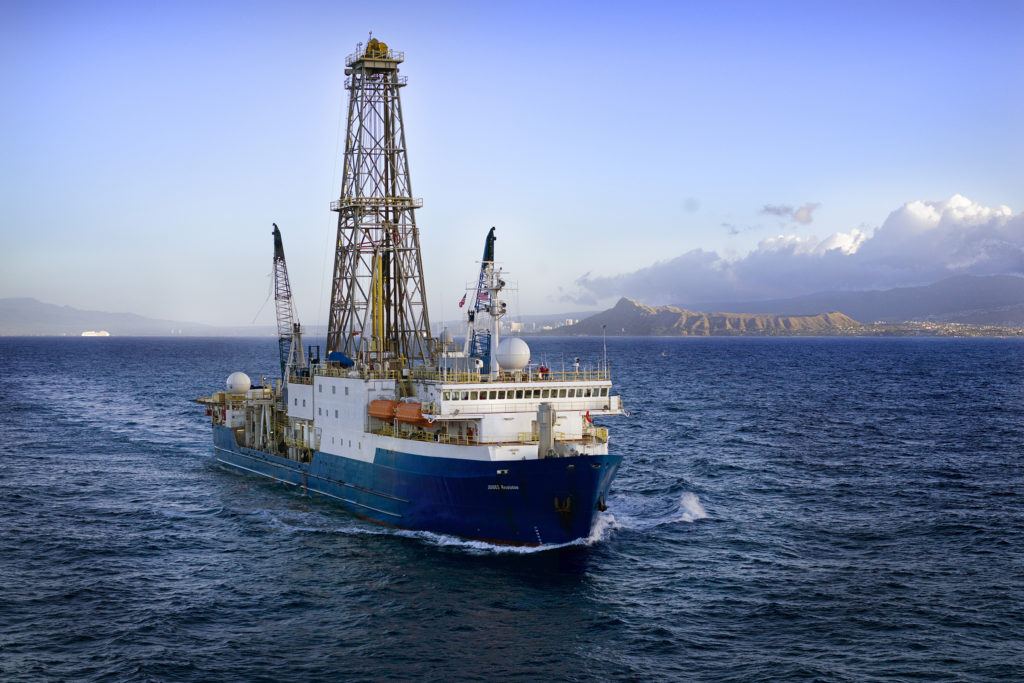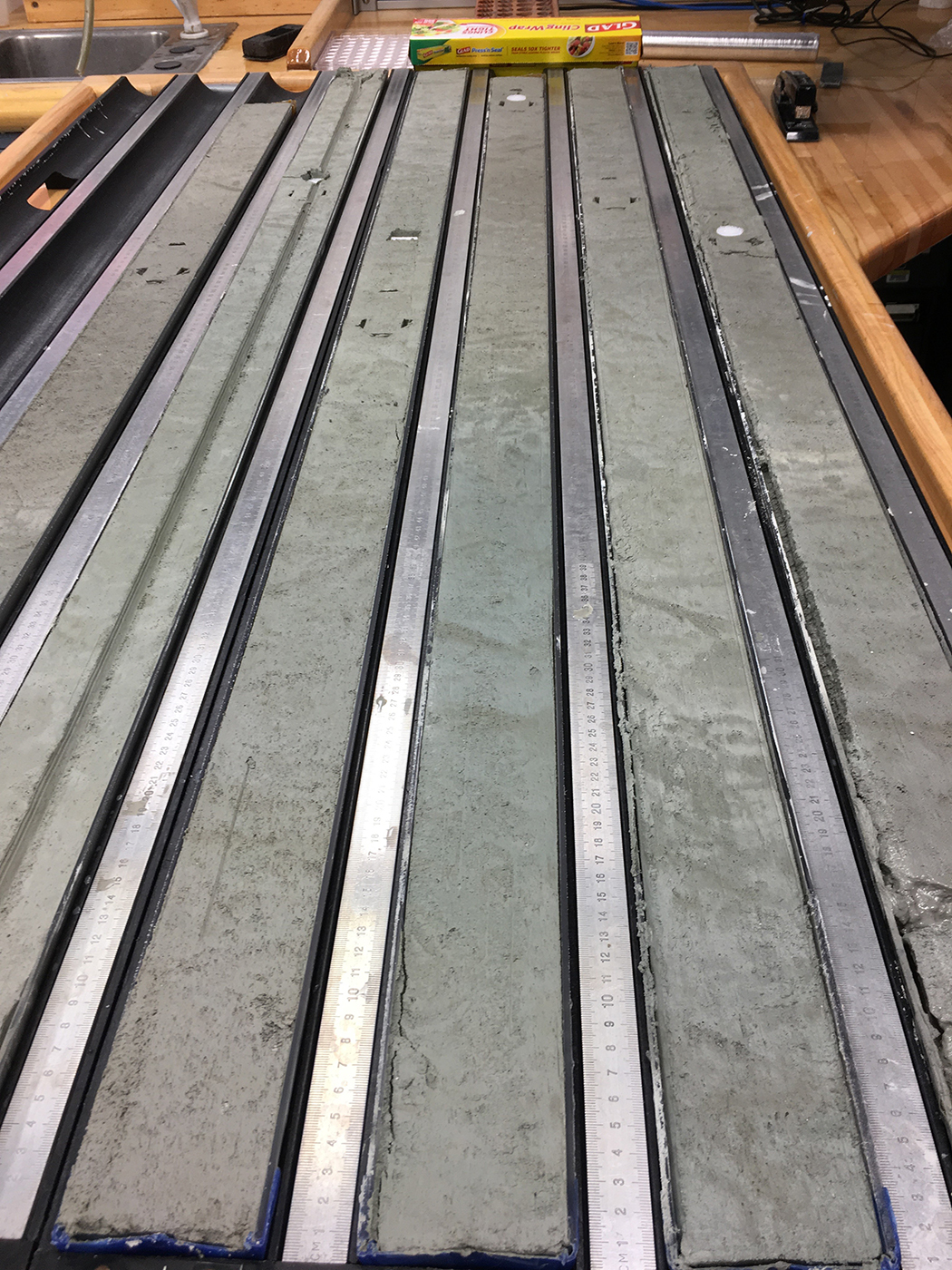
An international team of scientists led by Texas A&M University oceanographer Yige Zhang has developed a new approach to using organic carbon preserved within ocean sediment to predict the Earth’s future with regard to climate change.
Organic carbon — the organic remains of once-living organisms — found buried within global marine sediments effectively sequesters carbon dioxide from the atmosphere and therefore plays a key role in altering Earth’s CO2 levels. For decades, Zhang says, experts have used a system of isotopic calculations to estimate organic carbon burial. Because photosynthesis prefers the lighter isotope of carbon, isotope measurements can be used to differentiate between organic or inorganic carbon burial in the global ocean, but this method is known to be very uncertain.
Zhang and his colleagues at the University of Bremen, Rice University and the University of Leeds decided to challenge themselves to find a more accurate method, capitalizing on the plethora of deep-ocean drilling data collected by the National Science Foundation-funded International Ocean Discovery Program (IODP) during its decades’-worth of seagoing expeditions by the JOIDES Resolution aimed at studying the history of the Earth as recorded in sediments and rocks beneath the ocean floor.
The team used data amassed over 50-plus years from more than 1,500 scientific drilling missions by IODP and its predecessors to make first-of-their-kind calculations of global organic carbon burial rates directly from the material in the ocean floor. Their results are published today (Jan. 4) in the current issue of Nature.
“We had this idea of compiling a huge global database and calculating the organic carbon burial rate in each location to come up with the global carbon burial rate,” Zhang said. “We wanted to see if this ‘bottom-up’ method agreed with the traditional method of isotopic calculations, which is more ‘top down.’”
What they discovered, Zhang says, was shocking.
“Our new results are very different — they’re the opposite of what the isotope calculations are suggesting,” he said.

The paper’s first author, Ziye Li of the Bremen-based Center for Marine Environmental Sciences, was a visiting student in the Texas A&M Department of Oceanography at the time she conducted her research under Zhang’s supervision. Mark Torres, an assistant professor in the Department of Earth, Environmental and Planetary Sciences at Rice, and Benjamin Mills, an associate professor in the School of Earth and Environment at Leeds, also collaborated in the research and served as co-authors of the study.
“This is possible, thanks to the standardized measurements of TOC [total organic carbon] and dry bulk density onboard of the JR, alongside well-constrained age models of a large number of IODP sites,” Li said. “We have a lot of scientists and crew members to thank for these results.”
As an expert on the established isotope methods, Mills echoes Zhang’s astonishment in the wake of the team’s findings.
“I was really surprised how wrong our current ideas might be,” he shared.
Zhang cites a particularly noteworthy case during a period called the mid-Miocene, about 15 million years ago. Popular belief is that a large amount of organic carbon was buried around this interval, exemplified by the organic-rich “Monterey Formation” found in California. The team’s new result, however, suggests instead that the smallest amount of organic carbon was buried during this interval over the last 23 million years or so.
“Quantified organic carbon burial rates of the ‘Monterey period’ from EI Capitán State Beach in California are in fact on par with our open-ocean data,” Li said.
“If our new records turn out to be right, then they’re going to change a lot of our understanding about the organic carbon cycle,” Zhang added.

Zhang says that higher organic carbon burial rates can be directly correlated to the sequestration of large amounts of carbon dioxide from the atmosphere. Burying it as organic carbon and thereby forming organic-rich rocks — including petroleum or gas — is a potential solution to the broader environmental problem of anthropogenic CO2 emission.
However, the team found that warming of the Earth does not bode well for burying organic carbon, Zhang says. Warmer ocean temperatures allow bacteria’s metabolic rates to increase, resulting in the degradation of organic matter, returning it to carbon dioxide. The process, Zhang adds, is like respiration — the opposite of the lucrative process of photosynthesis.
“As we warm up the ocean, it will make it harder for organic carbon to find its way to be buried in the marine sediment system, and that is what we have found in our study — that the lowest rates of carbon sequestration happen when the planet was warm,” Zhang said. “So that’s not helping from this perspective, in terms of the issues that we’re facing in the present day.”
The team’s research suggests this respiration-like process is stopping the sequestration of organic carbon from reducing carbon dioxide emissions into the atmosphere. When bacteria process the organic carbon, it is returned to its original form as CO2, making the entire process inherently useless with regard to the rising emissions crisis.
Zhang describes the team’s paper as the beginning of a potentially impactful new way to analyze data that may aid in our understanding of climate change and how to curb its effects.
“It’s people’s curiosity, but I also want to make it more informative about what’s going to happen in the future,” Zhang said. “We’re doing several things quite creatively to really use paleo data to inform us about the present and future.”
The team’s research was funded by the American Chemical Society’s Petroleum Research Fund (Grant No. 59797-DNI2). Their paper, “Neogene burial of organic carbon in the global ocean,” can be viewed online along with related figures and captions.
Zhang joined the Texas A&M faculty in 2016 after receiving both his master’s (2011) and Ph.D. (2014) in geology and geophysics from Yale University and completing postdoctoral study as a Ziff Environmental Fellow at Harvard University (2014-2016). His lab uses geochemistry and paleoceanography tools to better understand how the Earth evolved chemically and to study past changes in climate with the goal of learning lessons for our future.
Texas A&M has served as Science Operator of the JOIDES Resolution on behalf of the NSF for the past 36 years as part of the largest federal research grant currently managed by the university.
See a related feature from Jade Boyd '88 with Rice University's Office of Public Affairs.
Did You Know
In addition to serving as Science Operator of the JOIDES Resolution, Texas A&M University also houses one of IODP’s three main ocean sediment core repositories. The facility, which is located on Texas A&M’s west campus, includes vast cold storage accommodations for thousands of core samples taken from beneath ocean floors around the world, with scientists from throughout the nation and abroad coming to College Station to study the extractions.
